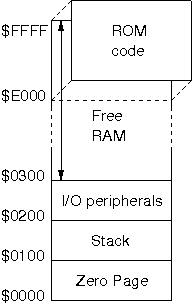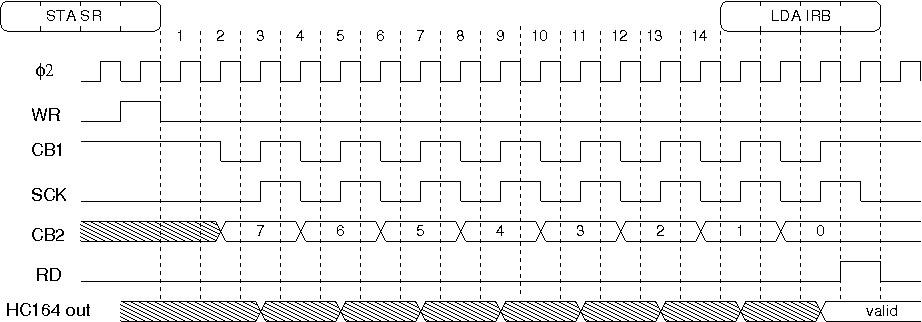
Motivation / history
Why to design a 1 MHz 6502 computer during 2010? Some nostalgia is involved, sure. It is also something that I got posponed since long time ago. Back, in the old days, I had a little consideration for the 6502. I always regarded it as inferior to its main competitors, mainly the Z80. Therefore, I built several computer prototypes around the Z80 and never paid attention to the 6502. Then, it came the time for more powerful computers and I turned towards the 68000. Later, the microcontrollers offered a complete computer in a single chip. No more routing of address and data buses! Just an IC and a quartz crystal and that's all (and, today, not even the crystal is needed). As a consequence, I got a handful of old ICs rusting in drawers for 20 years.
I changed my point of view about the 6502 after I tried to design a CPU core by myself. At that time I also knew the ARM architecture, and I started to recognize the value of hardware efficiency: do more with less transistors and less watts. Squeeze it into a small chip area, and sell it really cheap, and this was what Chuck Peddle, the designed of the 6502, indeed did. The amazing aspect of the 6502 was its price. It was so cheap that engineers first though it was a joke. Soon after the 6502 found its way into a lot of personal computers, arcade games and so on.
So, I made up my mind to design and build a computer prototype around this CPU. First, I started with an ambitious design. It included up to 4Mb of dynamic RAM, a crude MMU with 16kB pages, and even a protection mechanism against the bad behavior of user tasks: If a IRQ was left unserviced for too long an NMI was triggered. The MMU will restrict the I/O accesses to user tasks anyway. I also started to write a multitasking system using a self made emulator for the prototype to come... But, then I learned about the KIL op-codes.
These op-codes can stop the processor completely, and there is no protection against them. I guest the 6502 never went into space because of this. So, the whole design was more or less pointless. Also, the layout of the prototype turned out to require a lot of space, more than the usual boards I was using.
At the end I settled for a simpler design. A little more than the usual 6502 + VIA SBC. Later, I added a peripheral card with some interfaces to the VIA.
Features
There are 2 boards. The CPU board includes:
1 MHz 6502 NMOS CPU
64 kB of static RAM
8 kB of EPROM. The last 8 kB of the address space is shared between RAM and EPROM. Reads are directed to EPROM or RAM depending on a VIA pin. Writes are always directed to RAM.
Address decoding is done in a PALCE22V10. This really reduces the IC count.
One 6522 VIA for general purpose I/O
Connector for an alphanumeric LCD
Serial input through the Set Overflow pin. This input goes directly to the CPU and can be used for code download without any VIA use. As a side effect, you must keep this signal inactive while running your programs because it can set the overflov flag.
The second board is connected to the VIA pins only. It provides the following interfaces:
A fast SPI interface. The VIA's shift register is used for output and a 74HC164 for input. This latter IC is connected to the full port B of the VIA.
A SD card interface. It uses the SPI bus. The current ROM code can boot from a SD card with FAT-16 format.
Connector for an Olimex ENC28J60 Ethernet module. It also uses the SPI bus, but it can also trigger an interrupt. This interface still has to be tested.
A socket for I2C EEPROM memories. A bitbanging I2C emulator is provided in ROM. The system can boot from the I2C memory too
A speaker. Sound is generated by toggling a VIA pin.
A level converter for a RS232 interface. The UART function is emulated in the ROM code. The incoming data can trigger an interrupt in the VIA and this can be used to synchronize the reading. There are obvious disadvantages to this approach, but hardware UARTs weren't available, and the emulation is good enough as long as the incoming data comes from a keyboard.
Schematics


Board construction
Photographs
top view  |
front view  |
back view |
With ENC28J60  |